Symptoms of nutritional deficiencies may be confused with physiological disorders or infectious diseases.
Excessive rain or irrigation can leach mobile nutrients from the root zone, reducing the availability of nutrients for the normal development of the crop.
Nitrogen Deficiency
Plant exhibiting nitrogen deficiency symptoms. Plants grow more slowly and leaves turn light green, then yellow.
Severe deficiency causes the leaflets to cup upward. Eventually, older leaves dry up.
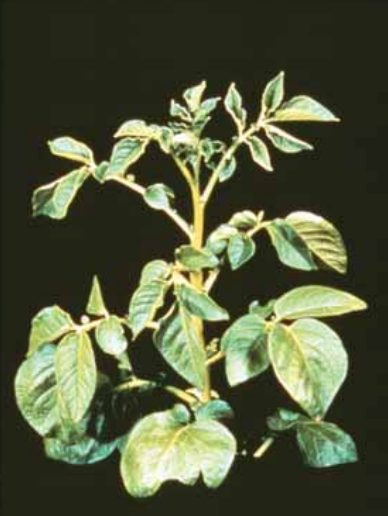
Phosphorus Deficiency
Plant exhibiting phosphorus deficiency symptoms.
Plants appear stunted. The leaves are of a darker green than the leaves of healthy plants. If the deficiency is severe, the leaves turn purplish and curl upward.

Potassium Deficiency
Young leaves have a glossy sheen and bluish colour.
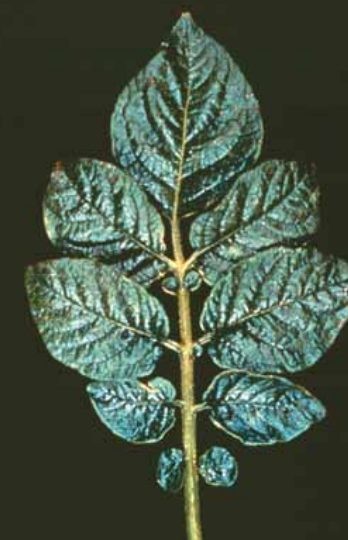
If the deficiency is severe, bronzing of leaves, marginal leaf scorching and leaf curling occur.
Eventually, the leaves dry up.

Magnesium Deficiency
Older leaves show interveinal yellowing and brown spots. Young leaves near the growing point remain green.
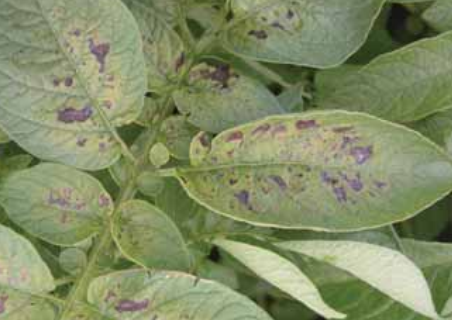
Manganese Deficiency
Manganese deficiency. Dark to black spotting develops between the veins, especially along the mid-rib and larger veins of the leaflets.
Younger leaves turn yellow and roll upward.
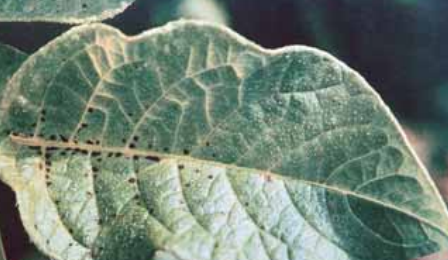
Boron Deficiency
Leaflets are crinkled and rolled upward; the leaf margins are dry and light brown. The growing point dies and the immature centre leaves are deformed.
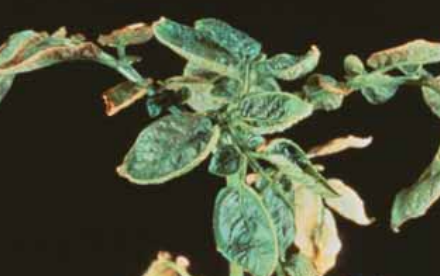
Boron deficiency
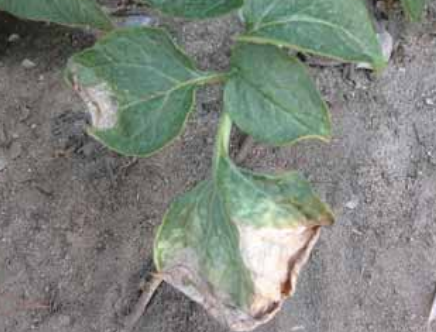
Zinc Deficiency
Affected plants are stunted; young leaves turn yellow and roll up. Terminal leaves are vertical and may show tipburn injury. The petioles become easily detached from
the stems, giving the plants a “palm tree” appearance.
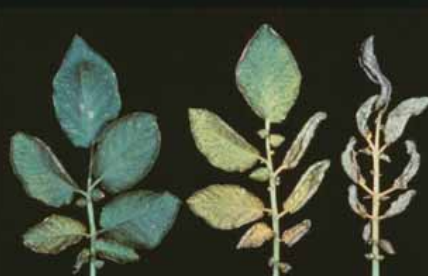
Leaflets showing varying degrees of zinc deficiency: mild symptoms (left), yellowing and greyish-brown spots on leaflets (middle), and severely deficient (right).
Iron Deficiency

The growing point and young leaves become yellow to nearly white without necrosis.

